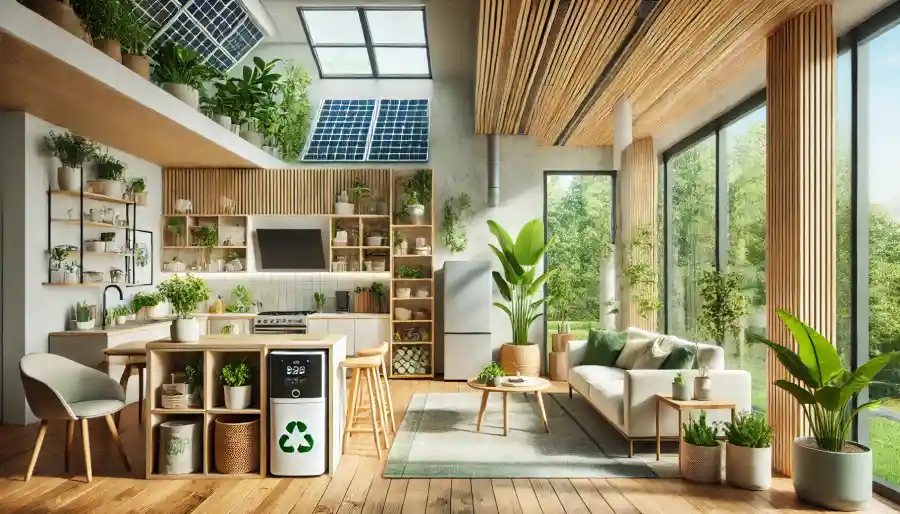Creating a Sustainable Living Space: Simple Changes for a Greener Home
Key Takeaways:
- Understand the importance of sustainability in everyday life.
- Learn practical tips for making your living space more eco-friendly.
- Discover the benefits of green living, including cost savings and environmental impact.
- Find out how small changes can make a big difference.
Introduction: Why Sustainability Matters
A sustainable lifestyle has moved from a trend to a necessity for our future. With the increasingly prominent threat of climate change and the rapid depletion of natural resources, embracing sustainability in our homes has never been more crucial. Simple alterations to your everyday routine can contribute significantly to environmental preservation. For instance, those living in Santa Clara apartments can change their daily habits to create a greener space. These steps benefit the environment, promote a healthier lifestyle, and save long-term costs. Sustainable living ensures that future generations can enjoy and thrive on this planet just as we do.
Choose Energy-Efficient Appliances
One of the simplest ways to make your home more sustainable is by opting for energy-efficient appliances. These devices are designed to use less electricity without sacrificing performance, saving you money on your utility bills and reducing your carbon footprint. For example, energy-efficient refrigerators, washers, and dishwashers can significantly decrease the electricity consumed. Energy-efficient appliances can reduce a household’s energy consumption by up to 30%. Furthermore, many governments offer rebates and incentives for purchasing such appliances, making them a cost-effective choice in the long run. Energy-efficient light bulbs, such as LEDs, consume significantly less power and have a longer lifespan than traditional incandescent bulbs.
Reduce Water Usage
Water conservation is another crucial aspect of a green lifestyle. Simple changes such as installing low-flow faucets, fixing leaks, and using water-efficient showerheads can significantly reduce water waste. Installing a dual-flush toilet can also considerably cut down on water usage. Water-efficient technologies can reduce water usage by 20-30%, as this EPA guide highlights. In addition, collecting rainwater for gardening and using greywater systems for irrigation can further conserve water. These measures not only help the environment but also lower your water bills. Moreover, educating all household members about the importance of water conservation and simple practices like turning off the tap while brushing their teeth can collectively impact over time.
Opt for Sustainable Building Materials
Consider using sustainable building materials to update or remodel your living space. These can range from reclaimed wood and bamboo to recycled metal and glass. Sustainable materials are often more durable and require less maintenance over time. Using them reduces the environmental impact of extracting and processing conventional building materials. Additionally, they usually come with a unique aesthetic that can enhance the overall look of your home. For example, countertops made from recycled glass not only look stylish but also contribute to waste reduction. Eco-friendly paints that emit fewer volatile organic compounds (VOCs) can improve indoor air quality, creating a healthier living environment. Also, insulating materials made from natural fibers can improve energy efficiency in your home by maintaining indoor temperatures.
Embrace Renewable Energy
Solar panels and other forms of renewable energy are becoming more accessible and affordable as technology advances. Installing solar panels can significantly reduce reliance on fossil fuels and lower electricity bills. While the initial investment might be high, long-term savings and government incentives make it worthwhile. Other renewable energy options, such as wind turbines and geothermal systems, can further reduce energy costs and carbon footprints. Adopting renewable energy benefits your household budget and contributes to global efforts to combat climate change. By generating your clean energy, you can also create a backup power source during electricity outages, adding an extra layer of resilience to your home.
Adopt a Minimalist Lifestyle
Living a minimalist lifestyle can go a long way in making your home sustainable. You can focus on quality over quantity by reducing clutter and unnecessary items. This lifestyle encourages mindful consumption and reduces waste. A minimalist home is easier to maintain, cleaner, and less stressful, aligning perfectly with sustainable living principles. It also fosters a sense of peace and order, which can improve your overall well-being. Minimalism goes beyond home decor; it extends to every purchase decision, promoting a more sustainable way of living. Embracing the minimalist approach encourages buying durable and timeless items, reducing the frequency of replacements and the waste associated with disposable goods.
Recycle and Compost
Recycling and composting are essential practices for a sustainable home. By separating recyclable materials like paper, plastic, and glass, you reduce the amount of waste in landfills. Composting organic waste like food scraps and yard waste turns them into valuable fertilizers for your garden, enriching the soil and reducing the need for chemical fertilizers. These practices help the environment and create a closed-loop system in your household, where waste is minimized, and resources are reused. Participating in local recycling programs and setting up a compost bin in your backyard can significantly contribute to waste reduction efforts. Also, engaging with community composting initiatives can further amplify your impact, fostering a collective mindset towards sustainability.
Conclusion: Small Changes, Big Impact
Achieving a sustainable living space doesn’t require drastic changes. Implementing these simple strategies can significantly reduce your environmental impact and create a healthier, more efficient home. The journey toward sustainability is a continuous process, but we move closer to preserving our planet for future generations with every small step. Embracing sustainability in our homes sets a positive example for others and promotes a culture of responsibility and stewardship. Remember, the combined effect of small actions individuals take can lead to substantial positive outcomes for our environment, encouraging a global movement towards sustainability.

